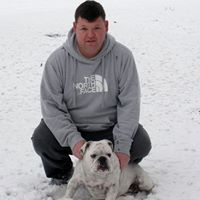Jonathan B Morrow
age ~70
from Kent, WA
- Also known as:
-
- Jonathan Bruce Morrow
- Jonathan K Morrow
- Jonathan G Morrow
- Jon B Morrow
- Jon K Morrow
- Johathan B Morrow
- Morrow Morrow
- Kathryn Morrow
- Phone and address:
-
14615 SE 244Th St, Kent, WA 98042
(206)2956149
Jonathan Morrow Phones & Addresses
- 14615 SE 244Th St, Kent, WA 98042 • (206)2956149
- 26018 157Th Ave SE, Kent, WA 98042 • (253)6397180
- Covington, WA
- Mount Laurel, NJ
- O Fallon, IL
- Los Angeles, CA
- Amelia, OH
- Indianola, IA
Specialities
Buyer's Agent • Listing Agent
Lawyers & Attorneys

Jonathan Briggs Morrow, Saint Louis MO - Lawyer
view sourceAddress:
Brown & James, P.C.
800 Market St Ste 1100, Saint Louis, MO 63101
(314)4213400 (Office)
800 Market St Ste 1100, Saint Louis, MO 63101
(314)4213400 (Office)
Licenses:
Illinois - Active And Authorized To Practice Law 2007
Education:
University of Missouri-Columbia
Degree - J.D.
Graduated - 2006
University of Missouri-Columbia
Degree - Doctor of Law (J.D.)
Graduated - 2006
Degree - J.D.
Graduated - 2006
University of Missouri-Columbia
Degree - Doctor of Law (J.D.)
Graduated - 2006
Specialties:
General Practice - 40%
Personal Injury - 20%
Litigation - 20%
Mediation - 20%
Personal Injury - 20%
Litigation - 20%
Mediation - 20%

Jonathan B. Morrow, Saint Louis MO - Lawyer
view sourceAddress:
800 Market St Ste 1100, Saint Louis, MO 63101
Licenses:
Arkansas - Authorized to practice 2010

Jonathan Briggs Morrow, Saint Louis MO - Lawyer
view sourceAddress:
1010 Market St., 20Th Floor, Saint Louis, MO 63101
Licenses:
Missouri - Good Standing, Active 2006
Resumes

President And Ceo, Sr. Software Developer At Two Morrows' Technology, Inc.
view sourceLocation:
Greater Seattle Area
Industry:
Computer Software

College And Career Counselor
view sourceLocation:
26018 157Th Ave southeast, Covington, WA 98042
Industry:
Primary/Secondary Education
Work:
Auburn High School
College and Career Counselor
College and Career Counselor
Languages:
English

Jonathan Morrow
view source
Senior Program Manager At Microsoft/Unified Communications
view sourceLocation:
Greater Seattle Area
Industry:
Computer Software

Jonathan Morrow
view sourceMedicine Doctors

Jonathan David Morrow
view sourceSpecialties:
Psychiatry
Education:
University of Michigan Medical School (2005)
Us Patents
-
Clamp Meter With Detachable Clamp And Clamp Storage Area
view source -
US Patent:20120091998, Apr 19, 2012
-
Filed:Oct 18, 2011
-
Appl. No.:13/275881
-
Inventors:Evans H. Nguyen - Issaquah WA, US
Jonathan P. Morrow - Mill Creek WA, US
Jason R. Crowe - Milwaukee WI, US
Zachary P. Haas - Seattle WA, US
James V. Curtin - Seattle WA, US -
International Classification:G01R 1/04
-
US Classification:324126
-
Abstract:Clamp meter with detachable clamp and a clamp storage area. The clamp meter includes a clamp and a housing. The clamp includes a measurement end and a handle portion. The measurement end includes a first measurement portion and a second measurement portion. The handle portion includes a first handle and a second handle. The housing includes a recess configured to removably receive the clamp when the clamp is not in use. The housing is connected to the clamp via a cord. When the clamp is received in the recess, the first measurement portion and the second measurement portion are positioned completely within the recess, the first handle and the second handle extend at least partially from the recess, and the recess prevents the clamp from being used. The clamp is capable of being removed from the recess in a one-handed use position.
-
Lighting Tester
view source -
US Patent:20120007602, Jan 12, 2012
-
Filed:Jul 8, 2011
-
Appl. No.:13/179276
-
Inventors:Jonathan P. Morrow - Mill Creek WA, US
Evans H. Nguyen - Renton WA, US
Hu Zenghong - Taian City, CN
Lin Jianqin - Tianshui City, CN -
International Classification:G01R 31/44
-
US Classification:324414
-
Abstract:A combination lighting tester tool. The combination lighting tester tool includes at least three independent testing tools for identifying and diagnosing a problem in a lighting system. For example, the tester includes a lamp testing function in which a high voltage test signal is generated and transmitted using an antenna. When the test signal is in proximity to a gas filled lamp, the voltage is of sufficient magnitude to ionize the gas inside the lamp, causing the lamp to illuminate. The tester also includes a ballast testing function in which the power lines or wires connecting a ballast to a lamp or lighting fixture are tested, and a filament tester for testing the filaments in a lamp for continuity or resistance. The tester also includes a worklight for illuminating an area under test and one or more display devices (e.g., LEDs, an LCD display, or the like) which provide an indication of, for example, a test being performed or a result of a test.
-
Using Machine Learning Algorithm To Ascertain Network Devices Used With Anonymous Identifiers
view source -
US Patent:20210042442, Feb 11, 2021
-
Filed:Oct 22, 2020
-
Appl. No.:17/077881
-
Inventors:- Bellevue WA, US
Douglas Galagate - Bellevue WA, US
Eric Yatskowitz - Seattle WA, US
Chuong Phan - Seattle WA, US
Tatiana Dashevskiy - Edmonds WA, US
Prem Kumar Bodiga - Bothell WA, US
Noah Dahlstrom - Seattle WA, US
Ruchir Sinha - Newcastle WA, US
Jonathan Morrow - Issaquah WA, US
Aaron Drake - Sammamish WA, US -
Assignee:T-Mobile USA, Inc. - Bellevue WA
-
International Classification:G06F 21/62
H04L 29/06
H04L 29/08
H04W 12/02 -
Abstract:Techniques for identifying certain types of network activity are disclosed, including parsing of a Uniform Resource Locator (URL) to identify a plurality of key-value pairs in a query string of the URL. The plurality of key-value pairs may include one or more potential anonymous identifiers. In an example embodiment, a machine learning algorithm is trained on the URL to determine whether the one or more potential anonymous identifiers are actual anonymous identifiers (i.e., advertising identifiers) that provide advertisers a method to identify a user device without using, for example, a permanent device identifier. In this embodiment, a ranking threshold is used to verify the URL. A verified URL associate the one or more potential anonymous identifiers with the user device as actual anonymous identifiers. Such techniques may be used to identify and eliminate malicious and/or undesirable network traffic.
-
Ascertaining Network Devices Used With Anonymous Identifiers
view source -
US Patent:20200349286, Nov 5, 2020
-
Filed:Jul 17, 2020
-
Appl. No.:16/932491
-
Inventors:- Bellevue WA, US
Prem Kumar Bodiga - Bellevue WA, US
Noah Dahlstrom - Bellevue WA, US
Ruchir Sinha - Newcastle WA, US
Jonathan Morrow - Seattle WA, US
Aaron Drake - Sammamish WA, US
Chuong Phan - Seattle WA, US -
International Classification:G06F 21/62
H04L 29/06
H04L 29/08
H04W 12/02 -
Abstract:Techniques for identifying certain types of network activity are disclosed, including parsing network traffic to automatically recognize anonymous identifiers. Such techniques may be used to identify and eliminate malicious and/or undesirable network traffic, and to identify topics relevant to a user of a particular network device so that communications to such a user are more likely to relate to a topic of interest to the user.
-
Reliability Metrics For Real-Time Auctions
view source -
US Patent:20190370850, Dec 5, 2019
-
Filed:Aug 19, 2019
-
Appl. No.:16/544484
-
Inventors:- Bellevue WA, US
Jonathan Patrick Morrow - Issaquah WA, US -
Assignee:T-Mobile USA, Inc. - Bellevue WA
-
International Classification:G06Q 30/02
-
Abstract:A method includes receiving identification information with a first electronic device and via a network, wherein the identification information is unique to a particular user device accessing webpage content, determining whether the identification information matches an identifier of a plurality of identifiers stored in a memory associated with the first electronic device, generating a reliability metric based on the determining, and providing the reliability metric to a second electronic device different from the first electronic device via the network. In such methods, the reliability metric is accessible by at least one bidder during a real-time auction associated with the webpage content.
-
Application Session Event Inference From Network Activity
view source -
US Patent:20190199811, Jun 27, 2019
-
Filed:Dec 22, 2017
-
Appl. No.:15/853513
-
Inventors:- Bellevue WA, US
Ruchir Sinha - Newcastle WA, US
Jonathan Patrick Morrow - Issaquah WA, US
Prem Kumar Bodiga - Bellevue WA, US
Ijaz Ahamed Meeran Abdul Jabbar - Bellevue WA, US -
International Classification:H04L 29/08
G06F 15/18
G06F 17/30
G06Q 30/02
H04L 12/26 -
Abstract:A computing system may automatically infer one or more events that occur during an application session involving activity on a network, such as the Internet. Such an application session may be interactions with, for example, social networking websites, banking websites, news websites, and so on. Events are any of a number of activities or transactions that may occur during the application session. The computing system may automatically infer an event by gathering network transaction data for network transactions performed by one or more client devices of a wireless communication network. The computing system may generate a network activity signature based, at least in part, on the network transaction data and apply pattern recognition and/or machine learning to the network activity signature to infer events associated with the network activity signature.
-
Identifying User Intention From Encrypted Browsing Activity
view source -
US Patent:20190130036, May 2, 2019
-
Filed:Oct 26, 2017
-
Appl. No.:15/795122
-
Inventors:- Bellevue WA, US
Ruchir Sinha - Newcastle WA, US
Prem Kumar Bodiga - Bellevue WA, US
Ijaz Ahamed - Bellevue WA, US
Jonathan Morrow - Seattle WA, US -
International Classification:G06F 17/30
-
Abstract:Techniques for understanding a user's intentions when the user is searching web sites on the Internet are disclosed. Although search queries are typically encrypted so they cannot be understood by entities other than the user and a host of a search engine being used, the present techniques describe ways that a third party can infer user intentions from encrypted activity. Determination of user intentions in ways described herein can be used to provide content to a user that may be of particular interest to the user. Furthermore, provision of such content is thereby not limited to a host of a search engine, as is typically the case when only the host can comprehend content of search queries.
-
Ascertaining Network Devices Used With Anonymous Identifiers
view source -
US Patent:20190130133, May 2, 2019
-
Filed:Nov 2, 2017
-
Appl. No.:15/801971
-
Inventors:- Bellevue WA, US
Prem Kumar Bodiga - Bellevue WA, US
Noah Dahlstrom - Bellevue WA, US
Ruchir Sinha - Newcastle WA, US
Jonathan Morrow - Seattle WA, US
Aaron Drake - Sammamish WA, US
Chuong Phan - Seattle WA, US -
International Classification:G06F 21/62
H04L 29/06
H04W 12/02
H04L 29/08 -
Abstract:Techniques for identifying certain types of network activity are disclosed, including parsing network traffic to automatically recognize anonymous identifiers. Such techniques may be used to identify and eliminate malicious and/or undesirable network traffic, and to identify topics relevant to a user of a particular network device so that communications to such a user are more likely to relate to a topic of interest to the user.
Youtube

Jonathan Morrow
view source
Jonathan Morrow
view source
Jonathan Morrow
view source
Jonathan Morrow
view source
Jonathan Morrow
view source
Jonathan Morrow
view source
Jonathan Morrow
view source
Jonathan Morrow
view sourceGoogleplus

Jonathan Morrow
Lived:
Los Angeles, CA
Work:
Slate Media Group - Account Manager
Education:
University of Texas at Austin

Jonathan Morrow
Work:
DirecTV - Admin

Jonathan Morrow

Jonathan Morrow

Jonathan Morrow

Jonathan Morrow

Jonathan Morrow

Jonathan Morrow
Myspace

Jonathan Morrow
view source
Jathan Morrow (Jathan ) ...
view sourceJonathan Morrow (Jonathan )'s profile on Myspace, the leading social entertainment destination powered by the passion of our fans.
Classmates

Jonathan Morrow
view sourceSchools:
Georgetown High School Georgetown TX 1991-1995
Community:
Mary Mason, Michelle Alvarez, Ruth Whitworth

Jonathan Morrow
view sourceSchools:
Southwestern High School Somerset KY 2002-2006

Jonathan Morrow
view sourceSchools:
Eutaw High School Eutaw AL 1990-1994
Community:
Patricia Barnes, Terry Rice, Vivian Branch

Jonathan Morrow
view sourceSchools:
Chelsea Elementary School Chelsea AL 1981-1985
Community:
Barbara Sleman, Lewis Atchison, Jeannie Summers

Jonathan Morrow
view sourceSchools:
Sanford Central High School Sanford NC 1964-1968
Community:
Lana Spencer, Judy Cole, Linda Harward, Terry Lassen, Debbie Yow, Wayne Wicker, Lura Guerard, Jean Thomas, Rick Causey, Connie Bowlin, Tilda Johnson, Stella Burns

Jonathan Morrow
view sourceSchools:
LeBlanc Middle School Sulphur LA 1997-2001
Community:
Yolanda Sittig, Whitney Bellow, Daryth Carlin, Anthony Holloway

Jonathan Morrow
view sourceCommunity:
Amanda Haire, Kim Mccurry, Mike Beck, Michelle Smith, Gena Tharp, Seletia Barreto, Stephen Stevenson, Pam Covington, K Nonya

Underwood Hills Elementar...
view sourceGraduates:
Jonathan Morrow (1961-1968),
Arthur Herman (1967-1971),
Jodi Kramer (1979-1985),
Kenneth Solomon (1977-1981)
Arthur Herman (1967-1971),
Jodi Kramer (1979-1985),
Kenneth Solomon (1977-1981)
Flickr
Get Report for Jonathan B Morrow from Kent, WA, age ~70


















